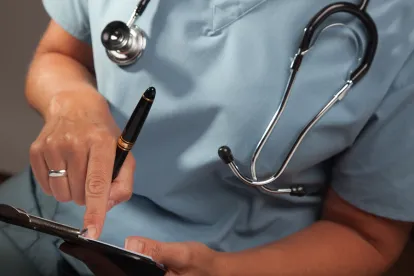On March 11, 2020, the World Health Organization declared that COVID-19 is now a pandemic. The effects continue to be felt in the United States, which now has well over 1,000 confirmed novel Coronavirus disease (COVID-19) cases. As of March 12, 2020, nineteen states have declared a state of emergency to ensure there are resources to address the Coronavirus, and President Trump has announced a ban on travel to and from Europe for 30 days starting on Friday, March 13, 2020. Given the prevalence of the Coronavirus in the U.S. and the growing numbers of cases globally, health care providers should take extra precaution with their patients, employees, and visitors. As all public health communications are making clear, efforts to limit the spread of COVID-19 will not only prevent illness, but they will also reduce the pandemic’s potential to overwhelm critical health care resources.
Monitor the Latest Guidance from Governmental and Non-Governmental Agencies
As the facts rapidly change, health care providers should closely monitor guidance from the U.S. Centers for Disease Control and Prevention and the World Health Organization, both of which have provided specific guidance for health care facilities.
Health care providers should also follow the updates from their state and local departments of health. Most states – including California, Illinois, Maryland, New Jersey, New York, Virginia, Washington – and the District of Columbia have designed dedicated webpages to provide guidance to health care providers on addressing COVID-19. Providers should be aware of how COVID-19 is impacting and will be addressed on a local level.
Employers should also be aware of how the Occupational Safety and Health Administration and the Equal Employment Opportunity Commission approach the impact of COVID-19 on the workforce. While OSHA does not have a standard for the spread of infectious disease, it has published Guidance on Preparing Workplaces for COVID-19. The EEOC has referred employers to CDC guidance, as well as its 2009 guidance on pandemic preparedness in the workplace.
Form a Rapid Response Team and Update Your Infectious Disease Outbreak Plan
Critically, health care providers should form a rapid response team to specifically address COVID-19. This should be a multi-disciplinary team with leadership capabilities and the authority to prepare the workforce, create a response plan, and quickly respond to the outbreak. Importantly, providers should update their infectious disease outbreak plan, and be prepared to adapt the plan to changing circumstances.
Take Steps to Protect and Treat Patients
According to the CDC, health care facilities should take the following steps to evaluate, treat and protect patients:
- Effectively communicate with patients – Regularly update patients on what is known about COVID-19 and how your facility is handling prevention and care.
- Limit in-person visits – Consider informing patients that they should seek alternatives to face-to-face visits, which can include promoting advice lines, patient portals and on-line self-assessment tools. To ensure that these safeguards are effective, staff should be trained to conduct telephonic and telehealth assessments of patients, including to triage which patients should stay home and which patients should seek in-person treatment.
- Separate patients with respiratory symptoms – Consider creating an area specifically for patients waiting for treatment with respiratory symptoms, ideally providing 6 feet between patients where possible.
- Audit supply needs – Ensure that supplies are available in waiting areas, including alcohol-based hand sanitizer and facemasks for all patients with respiratory symptoms. The audit should also include availability of PPE supplies, and providers should develop plans to optimize their supply of PPE if shortages occur.
- Routinely and Regularly Disinfect Public Spaces – Locations in which patients have been present, particularly those with COVID-19 symptoms, should be disinfected as often as practicable.
The CDC has also published guidance specific to nursing homes and long-term care facilities that includes the following recommendations:
- Restrict visitors, particularly those with respiratory symptoms – Post signs at the entrance(s) instructing visitors not to enter if they have symptoms of respiratory infection, and ask all visitors about fever or symptoms of respiratory infection. Restrict entry to anyone with fever or respiratory symptoms, international travel within the last 14 days to affected countries, and contact with someone with COVID-19.
- Monitor residents for fever or respiratory symptoms – Residents should be assessed for fever and respiratory symptoms upon admission and asked to immediately report any such signs.
- Implement appropriate infection prevention practices – Practice includes active monitoring of symptoms and coordination with state and local health departments.
- Promote personal hygiene and cough etiquette – All residents, visitors, and employees should be encouraged to practice hand and respiratory hygiene, and cough into their elbow or sleeve.
- Prevent the spread between facilities – Notify facilities prior transferring a resident with respiratory symptoms, and coordinate with the next facility.
Health care entities that are either HIPAA covered entities or their business associates must also be aware of their privacy and security obligations in the midst of this public health emergency. The Department of Health and Human Services, Office for Civil Rights, has recently issued guidance to support fairly robust sharing of patient information to combat COVID-19 on the basis of countervailing public health concerns. The guidance outlines three avenues for permissible disclosure without the need for obtaining patient authorization:
- To a public health authority, such as the CDC or a state or local health department;
- At the direction of a public health authority, to a foreign government agency acting in collaboration with the public health authority; and
- To persons at risk of contracting or spreading a disease if other state or local laws authorize the covered entity to notify such persons as necessary to prevent or control the spread of the disease or otherwise to carry out public health interventions or investigations.





 />i
/>i
